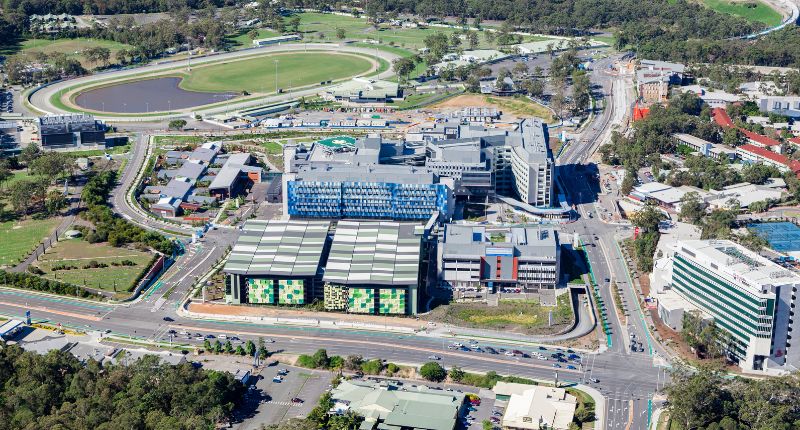
- Challenges in commercial real estate due to changing work attitudes, weak retail, and cooling demand.
- Commercial property shows resilience with robust building activity and stable lending activity.
- Dwindling investments, varied leasing demand, and sector-specific challenges amid economic shifts.
Australia’s commercial real estate sector has faced various challenges in the past year. Changing attitudes regarding on-site work have seen offices struggle, with businesses ‘flying’ to high-quality offices, sending the secondary market into a spiral.
Retail remained weak, as consumers, having been exposed to the comforts of online shopping during pandemic lockdowns, have not returned to brick-and-mortar stores. Industrial property continued to be highly sought after.
However, signs have indicated that demand may be cooling down.
Across all sectors, the current high-interest rate environment has been pressuring asset valuations.
Nevertheless, according to KPMG’s The Australian Commercial Property Economy December 2023 report, a number of positive factors suggest that Australia’s commercial properties will remain resilient when facing the economic turbulence expected in the coming quarters.
Commercial properties forecast to weather the storm
Despite the aforementioned setbacks, building activity for commercial properties has been robust. The value of total non-residential builds completed rose by 14% over the year, a statistic stemming from a sector clearing a backlog of projects.

The industry has forecasted a healthy supply of buildings under construction, with building approvals and work to be done increasing by 35% and 8%, respectively.
Likewise, the finance sector has continued to lend money to commercial property investors, and there has been no evidence that financiers have been ‘calling in’ present loans or substantial levels of covenant default.
Bank loan exposures to commercial property (share of total assets)

Australia’s economy has been weakening
Australia’s economy has been slowing down, with the Gross Domestic Product (GDP) over the third quarter of 2023 posting a mere 0.2% growth, falling from the June quarter’s 0.5% growth and the 2.1% growth experienced over the year.
Real economic activity

These numbers have been inflated by Australia’s post-border-opening migration boom, which saw almost 630,000 people enter the country, propelling consumption and investment activity.
Furthermore, the population surge has gifted the government with significant volumes of unplanned tax revenues, throwing a life raft to what would otherwise be disastrous budget outcomes.
Uncertainty rose across the commercial property market
The KPMG Commercial Property Uncertainty Index assesses instability and possible risks associated with office, industrial, and retail property investment.
Assets consistently reaping fair returns will generally produce a stable and low uncertainty index. Meanwhile, when an index spikes, investors are expecting or reacting to substantial shifts in market conditions.
KPMG Commercial Property Uncertainty Indexes

Accordingly, Uncertainty Indexes have risen across all sectors between the June and September quarters of 2023.
Several factors drove these changes, such as the current inflationary environment, increasing government bond yields, and retail lending interest rates. Additionally, global geopolitical crises and economic developments have been souring investment sentiment.
Homing in on individual sectors, the office sector’s index points grew by 3.2 to 12.9, a record high since December 2009 and thrice the average witnessed for the period June 2008 and September 2023.
The industrial property sector increased by 2.1 index points to 6.6, well under the same time in 2022. Moreover, the retail sector saw the lowest Uncertainty Index growth of all the sectors, up by 1.1 index points at 4.7 by the quarter’s end, a little over its long-term average of 4.5.
Investment activity has dwindled
The investment performance of commercial properties has fallen over the past six months. Asset values have dropped because investors expect higher returns as compensation for taking on increased debts and more perceived investment risk.
Offices have been hit hardest by the higher interest rates, with lower-grade offices suffering from the most risk due to low tenant demand. Investors remained cautious about industrial sector investments, apprehensive about geopolitical uncertainty and economic headwinds.
In the retail sector, yields have eased across all sub-sectors, with large-format retail and sub-regional sectors responsible for the sharpest drops.
Leasing demand across the property sector is varied
Performance in the office lease market has been mixed, with Brisbane offices continuing to be standouts while Melbourne and Sydney’s offices have stalled.
Across the nation, industrial properties have continued to fly off the shelves, especially in New South Wales and Victoria, where vacancy rates have fallen under 1% for the last two years.
The retail sector has been multifaceted. On the one hand, convenience and essential service segments have been thriving, most notably in well-established prime areas. On the other, subprime and regional retail centres have been floundering.




